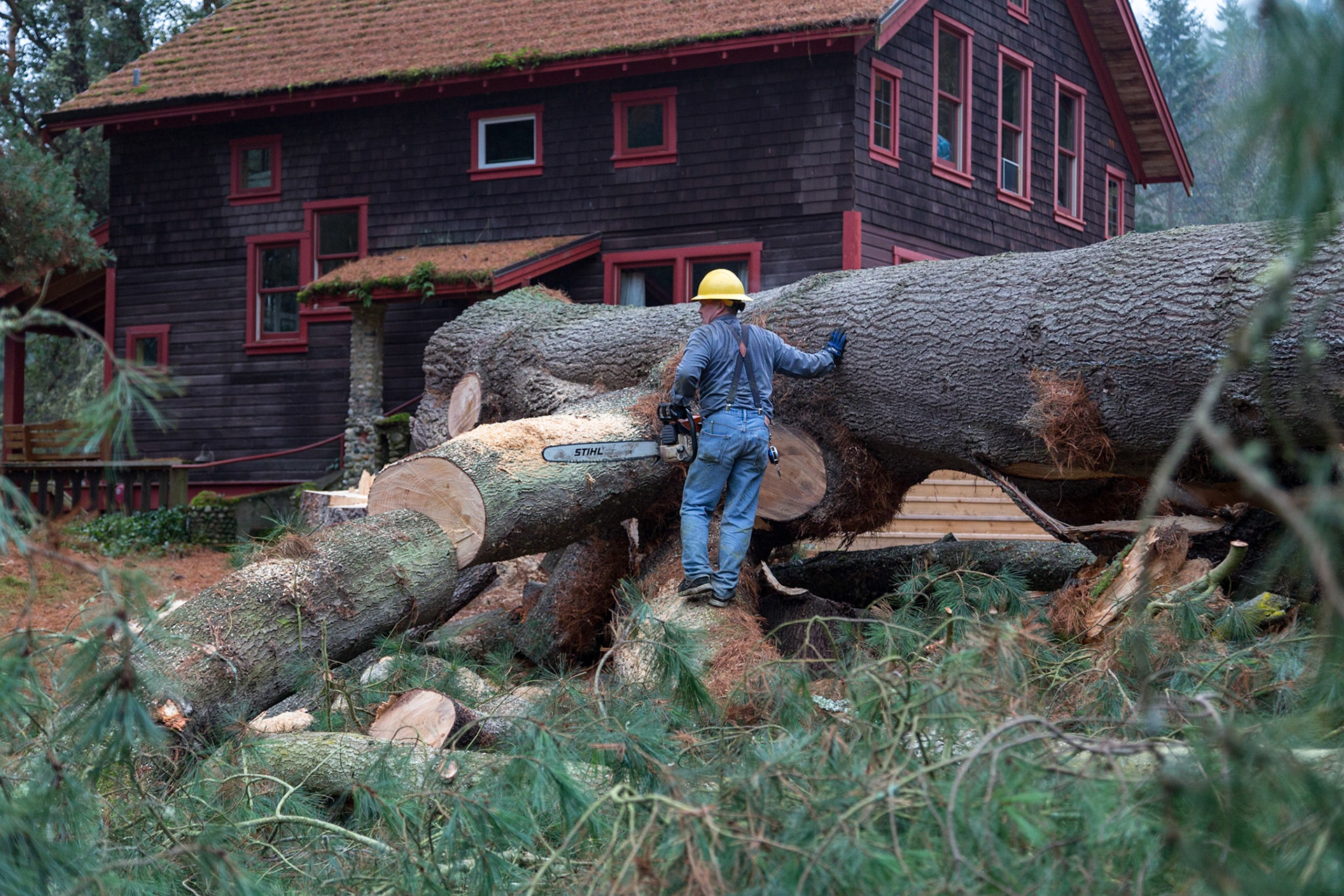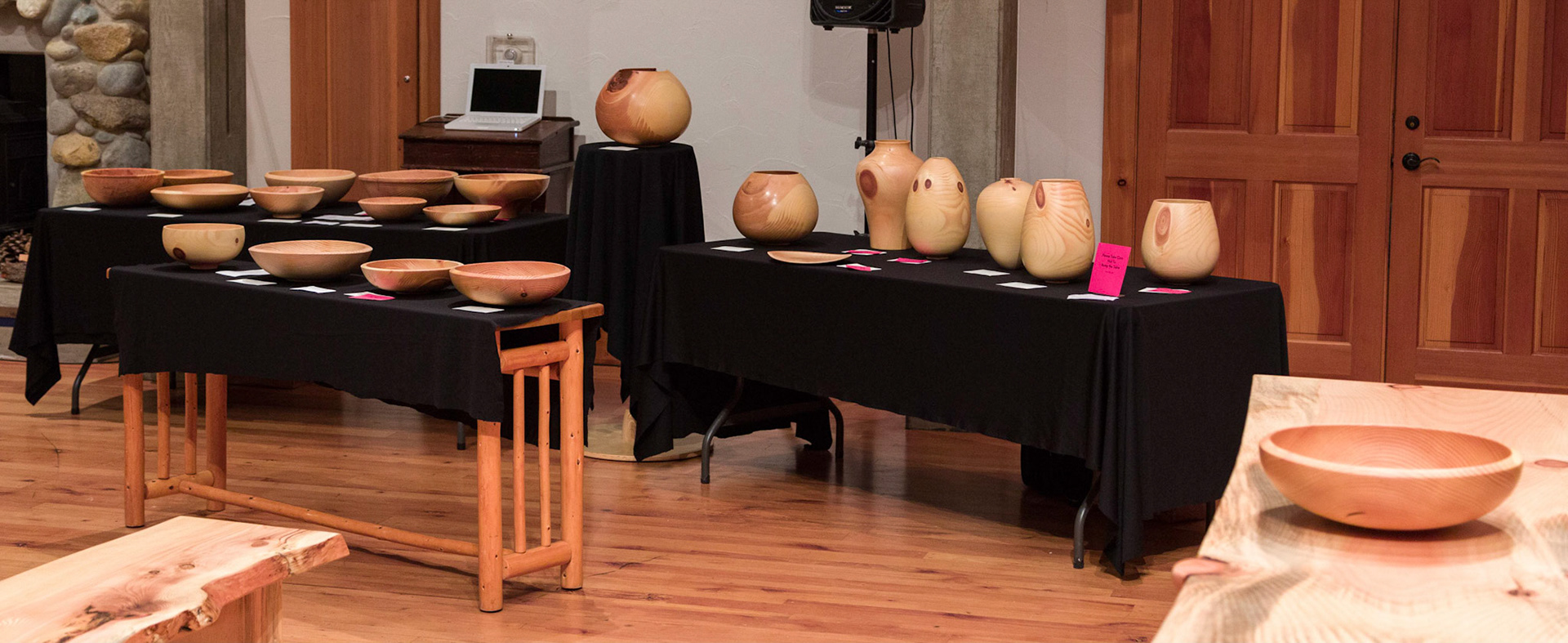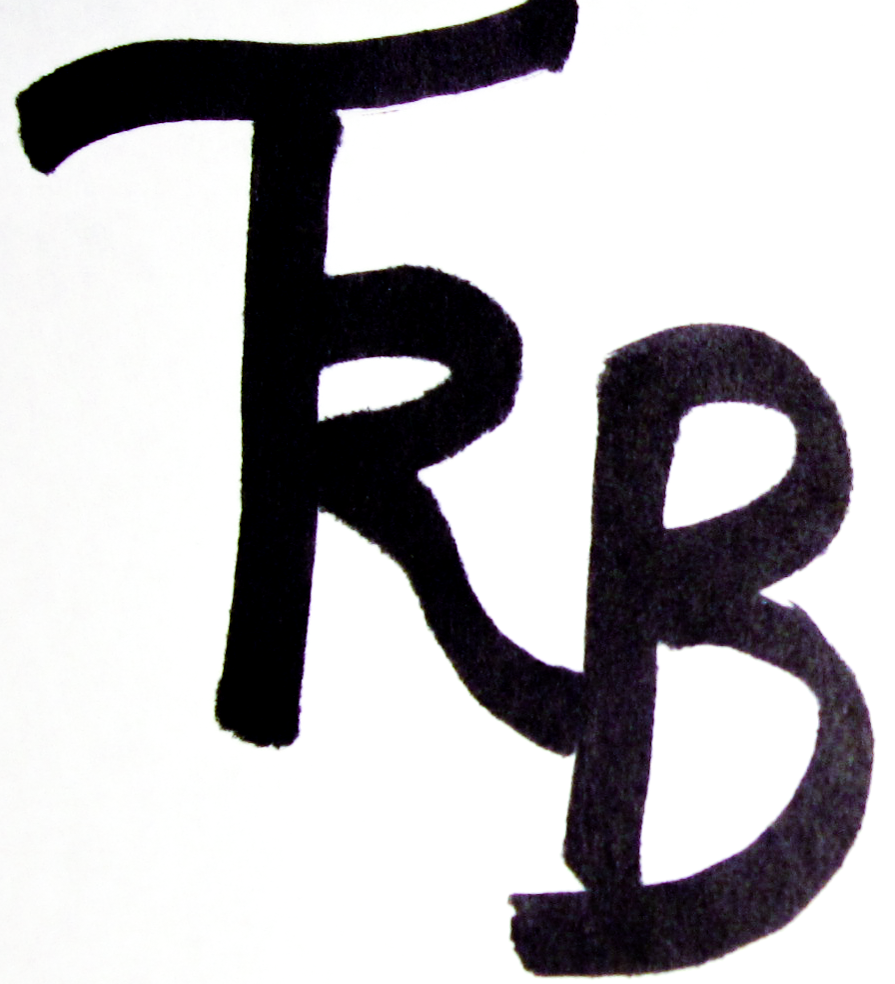My woodturnings are almost always created from donated wood. Frequently, the owner of a tree expresses the desire to have the tree turned into something useful and/or beautiful. They will often say "I don't want this tree to become firewood" and/or "I would like to have some physical memento of this tree."
In San Diego, California
The trees I worked with while in San Diego were Ficus, Iron Bark Eucalyptus, Juniper, Norfolk Island Pine, Olive, Pine, Plum, Redwood and Sycamore. All but the Redwood had grown in the San Diego area.
On Whidbey Island in Washington State
Since moving to Whidbey Island in 2006, I have worked Almond, Apple, Ash, Autumn-Olive, Birch, Black Locust, Cedar, Cherry, Cryptomeria-Japonica, Douglas-Fir, Elderberry, Elm, Hazel, Holly, Laburnum, Lombardy-Poplar, Madrone, Maple, Monkey Tree, Magnolia, Pine, Plum, Port-Orford-Cedar, Pussy-Willow, Walnut, and Willow. The Elm and Willow grew in eastern Washington State, some of the Black Locust grew on the mainland in an area just east of Whidbey Island, and some maple came from Anacortes on Fidalgo Island, north of Whidbey. Other than those, all the other trees were residents of Whidbey Island.
What is the scale of my work with trees I have received?
The number and variety of pieces I create from any given tree has varied from less than 10 to almost 100.When I am offered a complete tree, I often take most of it, and in doing so, I take responsibility for using as much as I can as well as I can.
There are several benefits in having the complete tree to work with. Each tree, even within within the same species, is unique. The more wood I get of a particular tree, the more opportunities I have to learn about the qualities of that tree and to experiment with different orientations with regard to the tree's grain, structure, and propensity to crack. By understanding the properties of the tree and its cracking patterns I am better able to determine how much of the tree to turn "green" and how much of it to rough-turn for later finished-turning once the wood has dried.
Two Example Trees
(1) Birch tree from Langley on Whidbey Island
The owners of a property in Langley were advised that their Birch tree was degrading and posed a danger to their house. Because some of the limbs were protruding over the roof of the house, the use of a cherry-picker truck was advised. The photo on the right shows the tree at the stage where the arborists had removed all of the upper trunk/limbs.
The owners contacted me asking if I could make use of this tree. And I could, so I took all of the tree except for limbs smaller than 1 foot in diameter. The trunk was 3 feet across. By counting the growth rings, I estimated the tree to have been about 40 years old.
The tree was taken down in late November of 2019 and by May of 2020 I had completed 71 pieces. The small amount of remaining wood will be used to make 10 or more smaller pieces.
To see the current output for this tree click here.
(2) Pine tree from the Whidbey Institute
The photo on the right shows the pine tree shortly before it was taken down. If you look carefully, about halfway up the main trunk, you should be able to see a slightly orange section where a secondary trunk had broken off during a storm not long before. This damage foretold a future vulnerability for the adjacent farm house, which houses visitors to the institute.
The tree had been planted about 100 years previous by the Pietilla family who had farmed on this site. The decision to fell the tree aroused sadness in the staff and in participants at Whidbey Institute. Thus it was decided to engage island woodworkers to use some of the wood to create a range of objects featuring their varied skills. The objects, ranging from dining tables to small carvings, were exhibited one weekend about a year later, and the objects sold, with the proceeds shared between the woodworkers and the institute.
As can be seen to the right, this was a very large tree, but I took a very small portion! Part of the reason for taking only a small amount was that pine is a relatively soft wood and not a preferred wood for woodturners because it can be more challenging than hard woods to produce a smooth, finished surface.
Below are three clickable photos. The first shows the felled tree and the man who cut it down. The second photo shows a page from a Whidbey Institute newsletter, a year later, announcing the exhibit of all the items created from the pine tree by the island woodworkers. The newsletter featured my work, as can be seen in the second photo below. The third picture displays the pine turnings I created, all of which sold except for the large one on the pedestal, center-back. Several of the pieces were purchased by members of the Pietilla family, the original homesteaders of this land.
To see the pine turnings in more detail click here.



